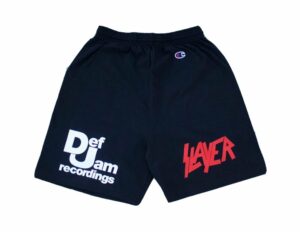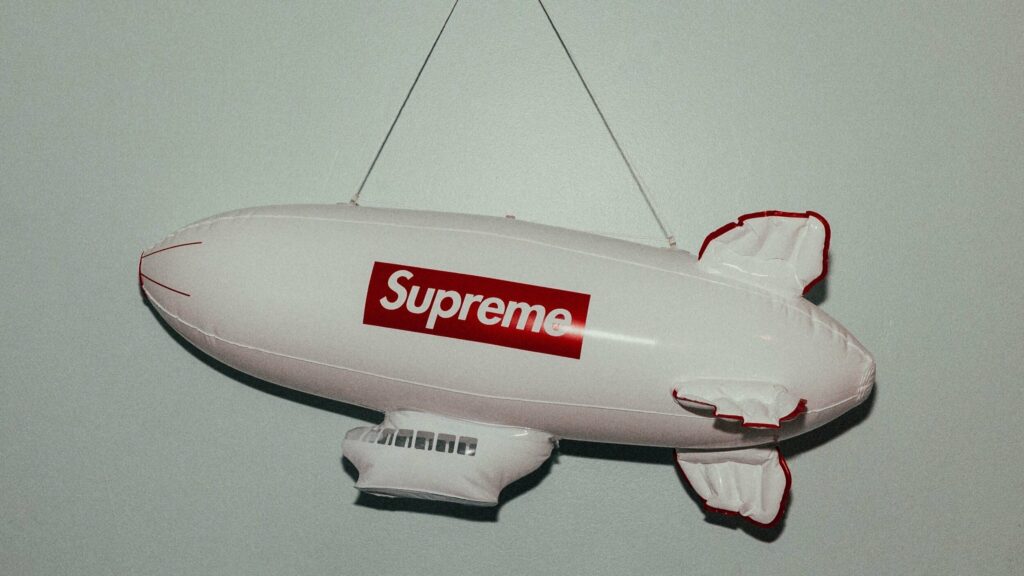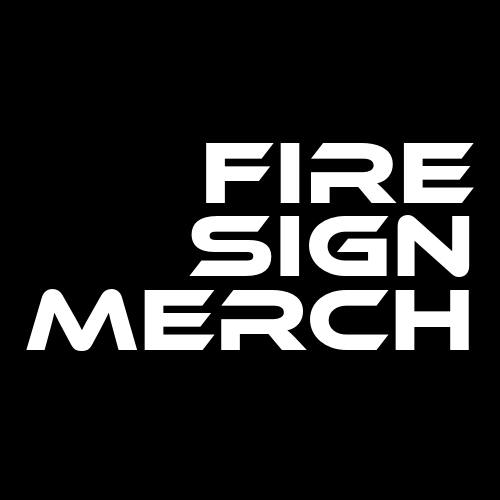There is a lot of confusion around US trademarks. Many people have misconceptions about their power, how to register a trademark, and how to keep a trademark. I want to shed light on some basic facts around trademarks that you should consider as you launch your merch line or fashion label.
That said, we at Fire Sign Merch are not lawyers. We can only share knowledge we have absorbed about trademarks throughout our experience manufacturing clothing. If you need reliable, specific guidance on legal matters surrounding your intellectual property, consult a lawyer.
- What Is A Trademark?
Under U.S. Trademark law, a trademark is defined as:
“Any word, name, symbol, or device, or any combination thereof used by a person to identify and distinguish his or her goods, including a unique product, from those manufactured or sold by others and to indicate the source of the goods, even if that source is unknown.”
- Examples of Different Trademark Types in Fashion:

- Word Marks: Word Marks are just names or catchphrases.
- Ex. “Supreme” or “World Famous” or “Nike” or “Just Do It”
- Logo Marks: Graphics, logos, or designs.
- Ex. Chanel interlocking C’s, The Hundreds’ Adam Bomb, or Fruit of the Loom’s fruit
- Trade Dress: The distinctive appearance of a product, including its packaging and overall design.
- Ex. the shape of Jack Daniel’s Whiskey bottles.
- Color Marks: Specific colors associated with a brand
- Ex. Tiffany & Co.’s signature blue, or Supreme’s red.
- What A Trademark Is Not:
Trademarks are not Copyrights. Copyrights protect the expression of ideas, not ideas. They safeguard the specific way in which the idea is expressed, such as the words in a book or the notes in a song.
“Gym Shorts” are an idea, whereas Slayer x Def Jam Gym Shorts are an expression (which also feature Word Marks and Logo Marks: the famous Slayer and Def Jam logos).
- Why Register Your Merch Trademark?
- Legal Protection: Registered Trademarks enjoy legal protection against unauthorized use, counterfeiting, and infringement while they are being continuously used and maintained
- Exclusive Rights: The Trademark owner gains exclusive rights to use the mark in connection with their products or services.
- Deterrence: Registration acts as a deterrent to potential infringers due to legal consequences.
The Big Caveats…

Now, there are two major caveats regarding Trademarks. And this is where much of the confusion comes in. There is a concept known as “use in commerce,” which is crucial for obtaining and maintaining your trademark; and another referred to as “genericide.”
Maintaining Your Trademark Protection Through Use in Commerce:
- Use in Commerce Requirement: Use in Commerce means your Trademark must be applied to goods or services. If you have not yet applied your Trademark to commerce, it is only an idea and cannot be protected. Taking action is everything. Failure to use the trademark in commerce for an extended period can lead to the cancellation or abandonment of the registration.
- Strategies to Maintain Trademark Protection: Fashion brands can take several steps to ensure that their trademarks remain protected through active use:
- Regular Product Releases: Constantly and regularly introduce new products or drops that incorporate your Trademark. This demonstrates ongoing use.
- Advertising and Promotion: Engage in advertising and promotional activities that prominently feature your Trademark.
- Licensing and Collaborations: If your Trademark is licensed to other parties, ensure that licensees are using the mark as intended. It should be consistent with your brand and guidelines.
- Online Presence: Maintain an active online presence with your Trademark displayed on official websites and social media. Don’t let your hosting expire. Don’t leave your Shopify empty.
“Genericide” in The Fashion, or Merch, Industry is defined as:
“The process by which a brand name loses its distinctive identity as a result of being used to refer to any product or service of its kind.”
Avoiding Genericide in The Merch Industry:
- Loss of Brand Identity:
There are many, many examples of Trademarks dying under genericide, but one of most famous in fashion would be Adidas’s Three Stripes. Though this was in a European court, the same concept applies in the US. Judges ruled that Adidas could not “prove that that mark has acquired, throughout the territory of the EU, distinctive character following the use which had been made of it.” - Legal Vulnerability: Without a registered trademark, your brand loses the legal leverage to take action against parties that infringe upon your intellectual property rights. You may have difficulty pursuing legal remedies, such as issuing cease and desist letters or filing lawsuits against infringers.
Fortunately in the case of Adidas, all that was at risk was their famous Three Stripes. Which, although famous, is not as necessary to their brand as founder Adi Dassler intended it to be. Much more vital in this case would be their Word Marks, and the more unique trefoil logo.

3. What You Can Do:
- Run advertising and educational campaigns that emphasize what’s unique about your brand.
- When using your brand’s name in public communications, always attribute it as a trademark, like: “Kleenex® tissues” or “Frisbee® flying disc.”
- Promote and market the brand name together with the product to reinforce the connection between your brand and the product. This will prevent it from becoming a generic term, which is what happened to the Zipper.
- Encourage the use of alternative terms (“Jager” for Jägermeister, “Coke” for Coca-Cola) or variations to describe the product. This can help prevent the brand name from becoming the default term for an entire category, like what happened to the fidget spinner.
- Keep an eye on how your brand name is used in the media, especially by competitors. Enforce proper usage (use legal means if necessary).
- Renew and maintain trademark registrations ON TIME.
- Avoid your brand’s name use as a generic term in public communications. You are referring to what you make, not a category.
- Collaborate with other brands or licensees to expand your product offerings. (Supreme is very, very good at this.) This broadens a consumer’s scope when they think of you.

Losing protection of a trademark can have severe consequences for a fashion brand, ranging from lost revenue and legal battles to damaged reputation and missed business opportunities. But the truthfully, despite how it looks in the case of Adidas’s Three Stripes Case, it’s not that difficult to avoid losing your Trademark.
Stay active. Be present in your brand. Love it and nurture it, evangelize it and always prepare another drop.

